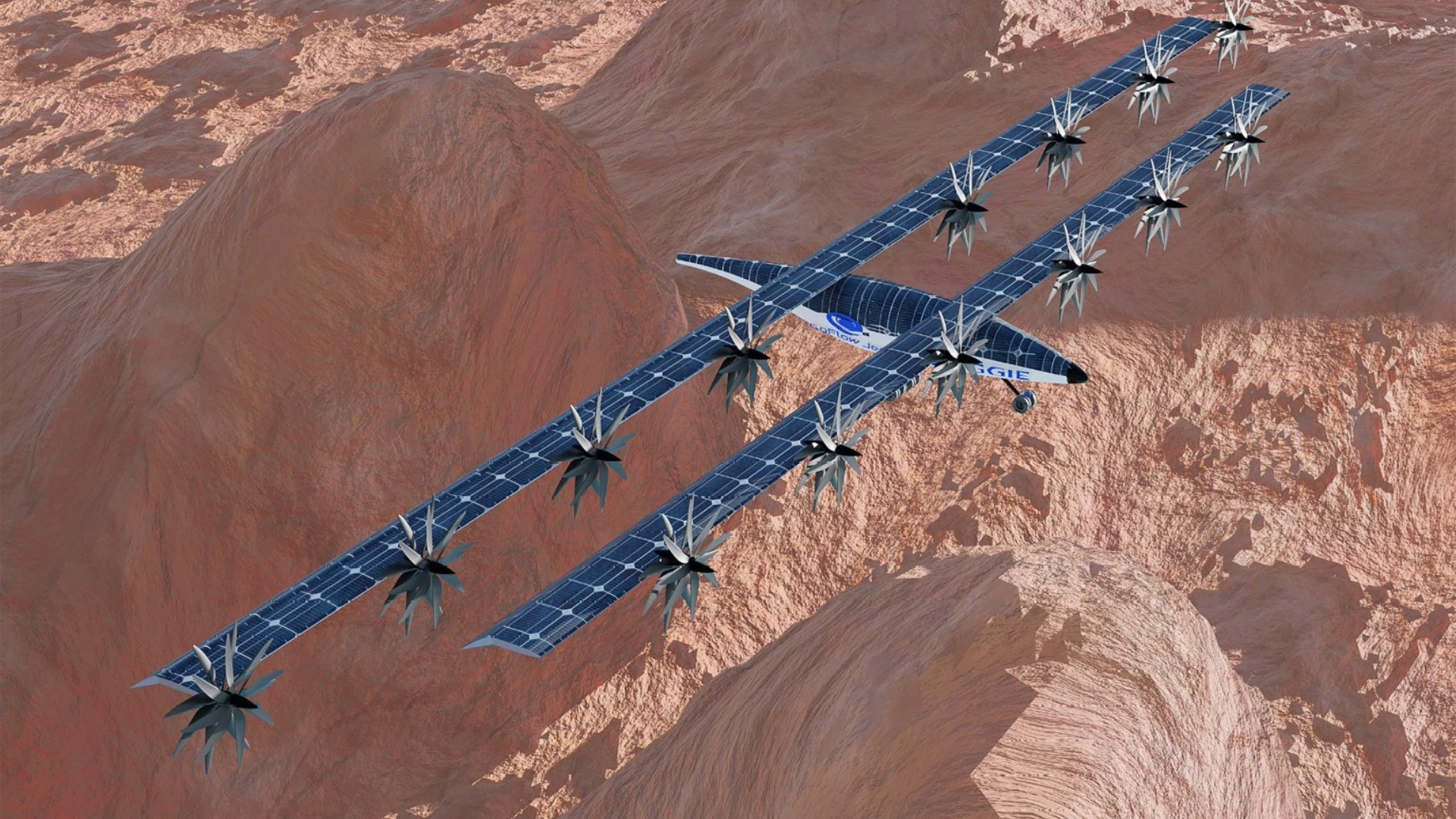MAGGIE: NASA Unveils Ambitious Plan for a Solar-Powered Electric Plane in Martian Exploration
9th Jan 2024
NASA has recently introduced its new innovative concept for an aircraft designed specifically to roam the Martian skies. The new aircraft is named the Mars Aerial and Ground Intelligent Explorer (MAGGIE), and this compact vehicle aims to help researchers further explore the red planet.
MAGGIE is the product of Coflow Jet, LLC which is a US-based aerospace company and it will be under NASA’s Innovative Advanced Concepts (NIAC) Program. The aircraft will operate with high efficiency and will be driven by solar energy on Mars. MAGGIE will be designed to work in the unique environment of Mars, which drastically differs from Earth, particularly the atmosphere and solar energy conditions.
MAGGIE Selection for 2024 NIAC Program
MAGGIE has received approval for the 2024 NIAC program, a program that has been ongoing since 1998. This program seeks unconventional proposals that could potentially contribute to the agency’s scientific and space exploration objectives. MAGGIE has received funding for early-stage technology studies and has the potential to shape the future of Mars exploration through the data it will collect.
MAGGIE’s features include a cruise Mach number of 0.25 and a cruise lift coefficient of 3.5, which is nearly 10 times greater than that of a conventional subsonic aircraft. It also comes with a unique vertical take-off/landing (VTOL) capability that will help it navigate through the thin atmosphere of Mars. The collection of technologies used on this aircraft will mitigate flow separation and facilitate a deflected slipstream, which will, in turn, simplify the VTOL operation.
The Goal for MAGGIE Aircraft
The future missions planned for Mars involve comprehensive studies of Martian planetary physics, aeronomy and the potential for it to support life at any time in its present or even the past. MAGGIE has a range of 179 kilometers if flown at a 1,000 meter altitude on a full battery in 7.6 sols. MAGGIE also has the potential to cover an estimated 16,000 kilometers in one Martian year.
If the VTOL technology works as planned, it could pave the way for future Martian missions involving aerial vehicles. These technologies could also be adjusted for missions to other bodies in our solar system, with talks of missions being planned to Venus already on the horizon.
The conceptual studies done around this project indicate feasibility, but NASA still emphasizes the need for further investigation. The agency recognizes that it can be an important breakthrough that could potentially help with technology being used on Earth and for space exploration.






Thank you for your comment! It will be visible on the site after moderation.